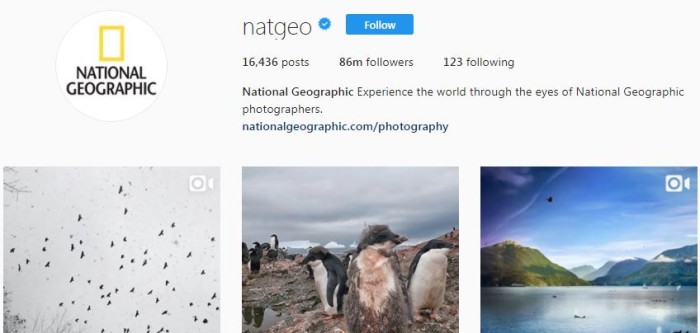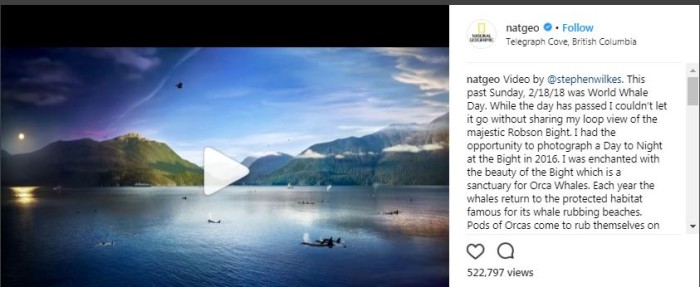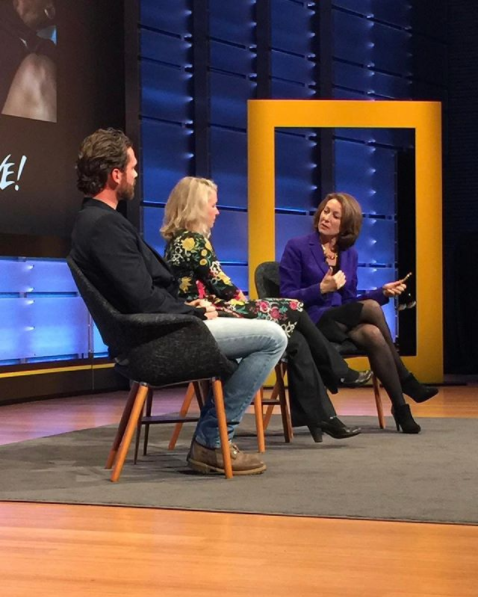
How 130-year-old National Geographic became a top social media brand
share on
“It is a digital future,” Susan Goldberg (pictured) told Marketing when speaking about the media industry.
As the 10th editor-in-chief of National Geographic, Goldberg is in charge of National Geographic’s journalism across platforms — except television. And prior to that, she was executive editor for federal, state and local government coverage for Bloomberg News in Washington.
A journalist for almost 40 years, Goldberg’s experience in the field adds weight to her statement.
She doesn’t mean to be pessimistic, nor is she saying that the 130-year-old magazine, which is still well-recognised for its book-like quality and its standard of photography, will stop doing print.
Yet from how the media landscape has been evolving - in terms of how journalists collect information, how content creators meet readers and viewers’ expectation, and how media workers are getting paid, she sees no options but to let the iconic yellow border lean into digital content and digital distribution even more than it is doing now.
“We have to focus on both digital and print because so much of the content starts out to be a print story, and then it goes out digitally, or it starts out in digital and ends up in print.”
“We try to use all those contents as much as we can across all platforms that can make the most sense from the content and economic perspective,” explains Goldberg.
“The two are very interconnected - almost nothing we do is purely print or just digital.”
Almost nothing we do is purely print or just digital.
Social is here to add layers
In fact, National Geographic’s social presence is staggering. It is now the biggest brand on social media with over 350 million followers globally across all platforms and the most popular brand on Instagram with 86 million followers.
By November 2017, the brand averaged 20,374 engagement for its social posts, while the next brand reached about 14k.
Goldberg believes the brand has done a good job in creating content that makes sense for where the audience is.
“We are known for deep reporting, and we should still be on social,” she explains.
We are known for deep reporting, and we should still be on social.
Defining social as a platform to break the visuals, Goldberg says the team uses social to add layers of information. Photographers and content creators push out information digitally on the brand’s website, or on Facebook, Snapchat or Twitter, to immediately tell one kind of story.
Then the team takes the opportunity to craft in-depth features for the print audience, repurposing the topic through mapping, photography, and detailed explanations of how that story came to be.
We use social to immediately tell one kind of story. Then we repurpose the topic on print through mapping, photography, and detailed explanations of how that accident came to be.
“One thing I’ve learned over the years is, different people absorb content through different ways. Some people focus on the picture, some focus on graphics, some the text.”
“We tried our best to position our content so that it uses the best of what each platform has to offer,” Goldberg says.
Hand front staff all the keys to “go ahead and post”
To achieve success on social, Goldberg says the brand has put a lot of effort into building an authentic voice.
She says the team lets on-site photographers decide about half of their topics, plus it gives all the keys to its Instagram account to about 100 trusted photographers, and just let them “go ahead and post”.
“Those are not the voices of the editor, but photographers on the scene who tell people what it looked like, felt like, smelled like, to get those pictures in real time. It helps us crack into the tininess of digital; it gives reasons for users to follow us on social,” Goldberg says.
Those are not the voices of the editor, but photographers on the scene who tell people how it looked like, felt like, smelled like, to get those pictures in real time.
“What doesn’t change is our values and ethics that we bring in reporting, that we are on the side of science, facts; but what might change a little bit is how conversational or casual something is.”
“We have a little bit of a different tone on Snapchat than in the print magazine - I always want to work to be conversational, but there is some kind of casual-ness to the digital expression that I think you don’t see quite the same way for the magazine.”
There is some kind of casual-ness to the digital expression that I think you don’t see quite the same way for the magazine.
“It is definitely going to look different from how the story looks on Facebook, on our website, and in print,” she adds.
There is a monetising model as long as you stay relevant
As successful as it seems, Goldberg says that National Geographic, like any other media companies or content providers, looks for answers from the evolving business model.
“It is very clear that in the print world, subscribers will pay for the content, and to a lesser extent, print advertising also contributes. But when you put the content digitally across platforms, the economics don’t work in quite the same way as we know,” she said.
When you put the content digitally across platforms, the economics don’t work in quite the same way as we know.
Currently, the iconic yellow border uses three main ways to monetise the content: the subscription-model for print, advertising for print and digital, and partnerships with businesses and companies to undertake projects for both print and digital. But as the revenue model evolves, Goldberg thinks it will take time for the monetisation to settle down.
“What we can do is to balance between both the stories that we want to tell and the stories that the companies are interested to learn.”
What we can do is to balance between both the stories that we want to tell and the stories that the companies are interested to learn.
Fortunately, the topics that the brand has been reporting on for 130 years, including environmental sustainability, scientific innovation, climate change and culture, are also areas that millennials are incredibly interested in.
“The content has a new relevance now, and I think we need a growing appreciation, a better understanding of all the different ways to tell the story,” she says.
“When I started out as a journalist I used to visit cafes to watch how people read the newspaper, but now we can find out exactly when they start and stop reading any story because we can understand patterns from their digital fingerprint.”
When I started out as a journalist I used to visit cafes to watch how people read the newspaper, but now we can find out exactly when they start and stop reading any story because we can understand patterns from their digital fingerprint.
“There are different new tools and now we have to take advantage of them,” she concluded.
share on
Free newsletter
Get the daily lowdown on Asia's top marketing stories.
We break down the big and messy topics of the day so you're updated on the most important developments in Asia's marketing development – for free.
subscribe now open in new window




